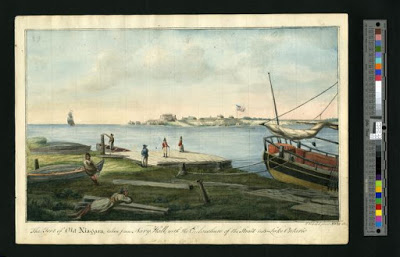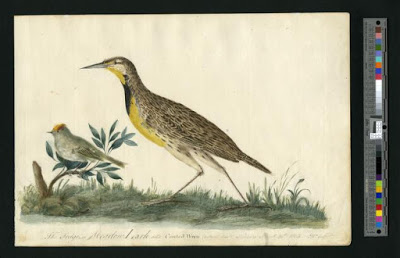The watercolor sketches of Edward Walsh, M.D. are some of the most frequently reproduced materials from the Clements Library. These sketches, done between 1803 and 1806 while Walsh served as a surgeon for the 49th Regiment of Foot at Fort George, Ontario, are vital visual resources for any scholar interested in the history of the Old Northwest. His depictions of Detroit and York (Toronto) are among the best and earliest known views of those settlements. His detailed renderings of Fort George and Fort Niagara are valuable documentation on the state of these facilities in the interval between the American Revolution and the War of 1812. While Walsh mainly painted landscapes, his images are far from static; always present are people he encountered on his travels, from natives in canoes to soldiers at drill. The country that Walsh describes with these pictures is one still inhabited by indigenous people, carefully observed and depicted by the artist. In addition to landscapes, he also created images of birds and other wild North American animals.
Walsh, a merchant’s son, was born in Waterford, Ireland in 1756. He studied medicine at Glasgow and Edinburgh before entering the military, where he had a hand shattered by an explosion while serving under Nelson during the British attack on Copenhagen in 1801. While in North America, he carried out smallpox vaccinations among the natives living along the Grand River near Lake Erie. He associated with both Tecumseh and Thayendanegea (Joseph Brant), even serving as a character witness in defense of the latter at a tribal council. After his relatively peaceful period of service in Upper Canada, Walsh returned to Europe, serving in the Peninsular War as well as at the Battle of Waterloo in 1815. He retired to Ireland, dying in Dublin in 1832.
Thanks to the Graphics Division’s Diversity Equity and Inclusion internship from the summer of 2017, the Walsh watercolors are now available for viewing in the Clements Library Image Bank.


